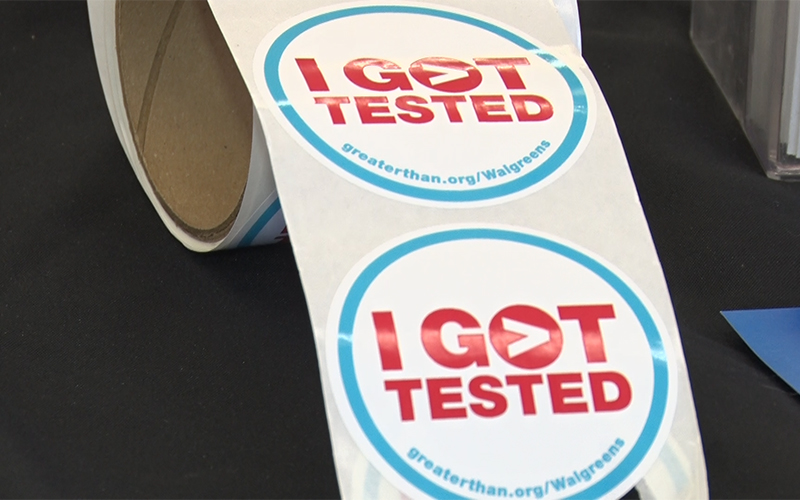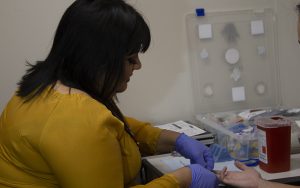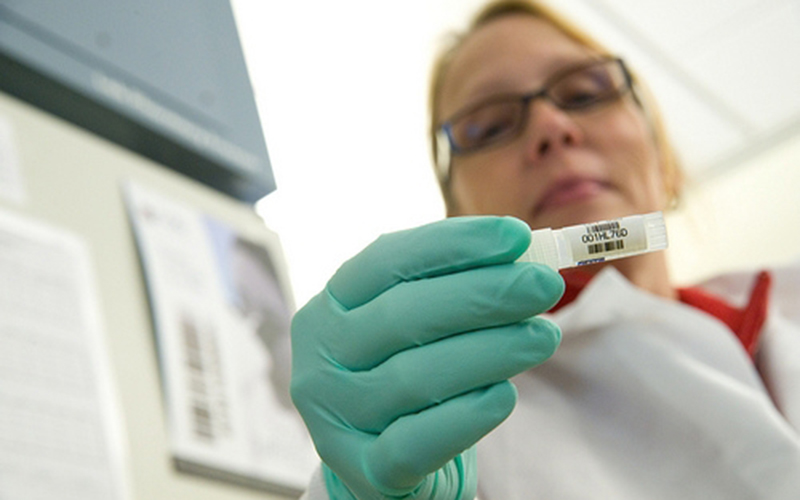
Walgreens and other pharmacies took part in National HIV Testing Day on June 27. But some health-care facilities offer free testing year round, including a half-dozen locations in the Phoenix area. (Photo by Jennifer Magana/Cronkite News)
PHOENIX – A dozen people waited at Phoenix Walgreens on a Wednesday in late June to get tested for HIV. One by one, they were called into a small room, asked a few general questions and had a finger pricked to draw blood. The results followed quickly – the entire process took about five minutes.
Despite the ease and speed, most Arizonans don’t get tested for the human immunodeficiency virus, which experts say is one reason HIV cases in the state have ticked up in recent years after decades of steady decline.
About 55 percent of Arizonans have never been tested for HIV, said Glen Spencer, executive director at Aunt Rita’s Foundation in Phoenix.

People can get a 20-minute test that detects an exposure from two weeks ago; or a 90-second test that detects an exposure from 45 days or longer. (Photo by Jennifer Magana/Cronkite News)
“We are trying to change that,” said Spencer, whose organization holds walks and other events to fund HIV/AIDS service agencies, according to its website.
Walgreens was one of the companies offering free testing one June 27, National HIV Testing Day. But some health-care facilities offer free testing year round, including a half dozen locations in the Phoenix area, according to the Centers for Disease Control and Prevention.
Tanya Kunnapilly, a social worker for Native Health’s inHarmony HIV Circle of Care, was one of the workers testing blood at the Phoenix Walgreens last month. She said one in seven people with HIV doesn’t know their status, which only exacerbates the problem.
In its 2017 HIV/AIDS Epidemiology Annual Report, the Arizona Department of Health Services said 780 new HIV cases were reported to state officials in 2016.
It noted that HIV incidence rates have fallen dramatically since 1986, and they remained mostly flat from 1996 until 2011, when they declined sharply for reasons that aren’t clear. Since then, rates have ticked up; however, the numbers from 2016 are roughly similar to those from 2006.
Some of the incidence increase is due to more accurate testing, but another factor is young people are not using condoms or getting tested for the retrovirus. Use of intravenous drugs also contributes to the problem, health officials said, noting, too, that Arizona’s population grew 1.5 percent from 2015-16.
The annual report said 17,464 Arizonans were living with HIV/AIDS in 2016. Young men ages 25-29 had the highest HIV/AIDS diagnosis rate in Arizona of 31.7 per 100,000, it said. Infection rates for non-Hispanic blacks have nearly doubled from 22 per 100,000 in 2010 to 45 per 100,000 in 2016, the report said.
Organizations involved with HIV/AIDS awareness encourage people to get tested and learn their status, and they hope to destigmatize the perception most have of the illness.
At the Walgreens last month, patients had two options: A 20-minute test that detects an exposure from two weeks ago or longer and more accurately identifies when the disease was contracted, or a 90-second test that detects an exposure from 45 days or longer.
Kunnapilly said rates of other sexually transmitted disease are going up in Arizona as well, and there is a correlation between HIV and other forms of STDs.
Spencer said most physicians don’t promote HIV testing, either it routinely or at all, which is one reason so many people neglect to check their status.
“Insurance covers it, so there really is no reason why physicians shouldn’t … be testing everybody,” he said.
“We really want to promote HIV prevention and get this word out to help people be informed and be empowered to protect their health.”
Subscribe to Cronkite News on YouTube.
